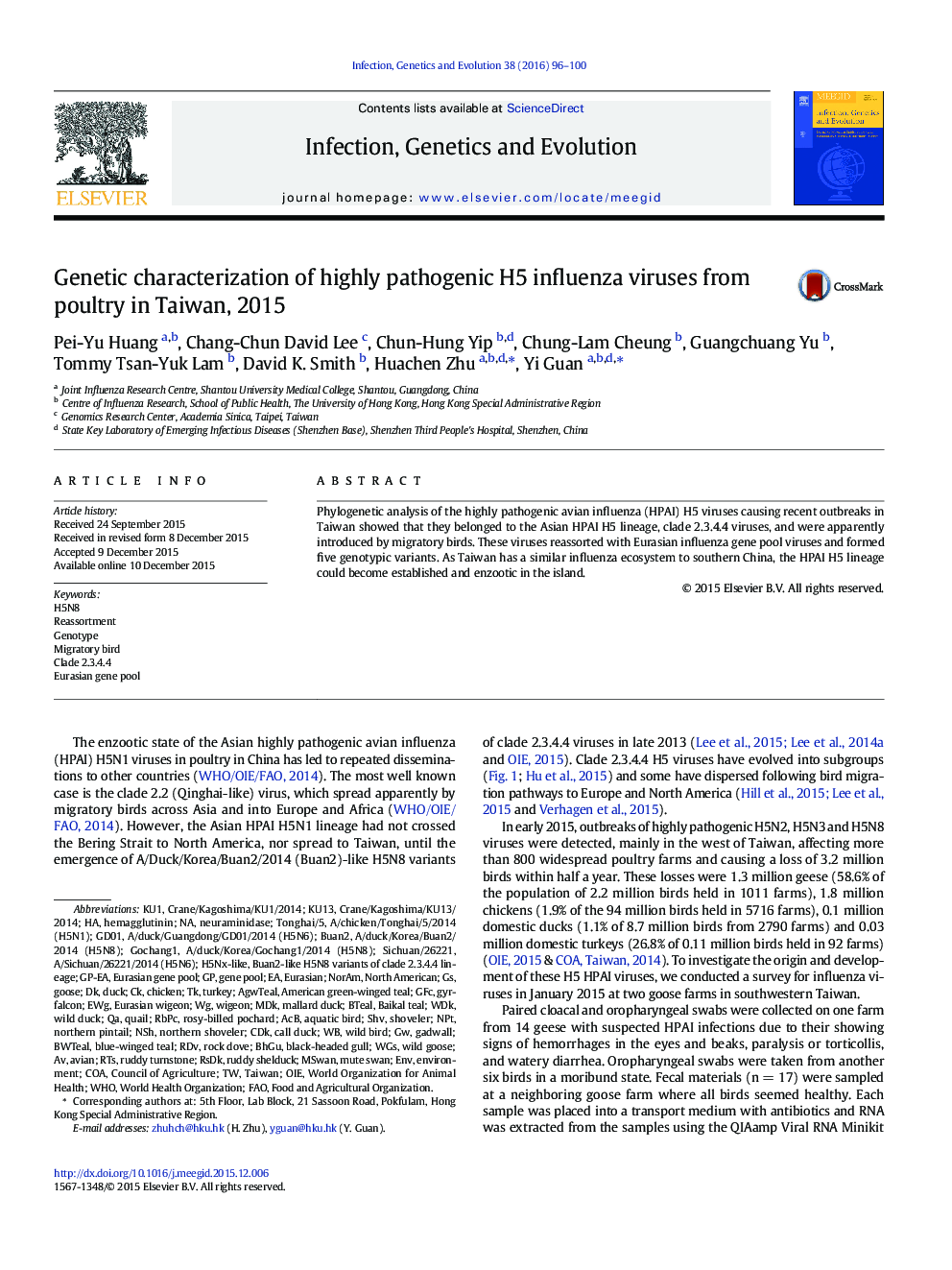| Article ID | Journal | Published Year | Pages | File Type |
|---|---|---|---|---|
| 5908508 | Infection, Genetics and Evolution | 2016 | 5 Pages |
Abstract
Phylogenetic analysis of the highly pathogenic avian influenza (HPAI) H5 viruses causing recent outbreaks in Taiwan showed that they belonged to the Asian HPAI H5 lineage, clade 2.3.4.4 viruses, and were apparently introduced by migratory birds. These viruses reassorted with Eurasian influenza gene pool viruses and formed five genotypic variants. As Taiwan has a similar influenza ecosystem to southern China, the HPAI H5 lineage could become established and enzootic in the island.
Keywords
CDKGyrfalconClade 2.3.4.4EWGRDVWorld Organization for Animal HealthOIESHVNorthern pintailH5N8MDKCOABlack-headed gullNPTENVRTSWGSGFCAcbAvianNorth AmericanDuckMallard duckReassortmentGene poolQuailTaiwanTurkeyMute swanWorld Health OrganizationGoosefood and agricultural organizationFAOEnvironmentChickenneuraminidasehemagglutininMigratory birdWild birdGenotypeWHO
Related Topics
Life Sciences
Agricultural and Biological Sciences
Ecology, Evolution, Behavior and Systematics
Authors
Pei-Yu Huang, Chang-Chun David Lee, Chun-Hung Yip, Chung-Lam Cheung, Guangchuang Yu, Tommy Tsan-Yuk Lam, David K. Smith, Huachen Zhu, Yi Guan,
